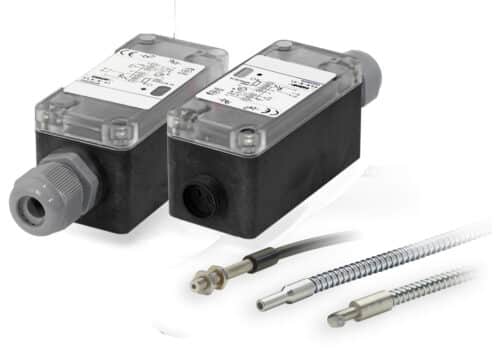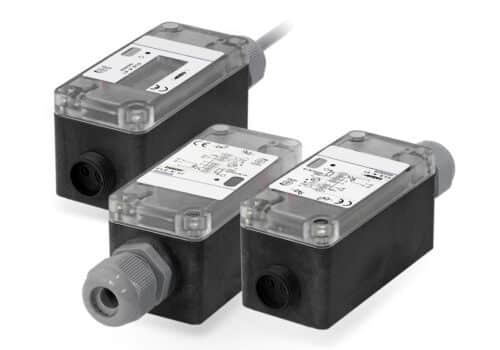Standard version of sensors are often not directly compatible for use in many automation and assembly technology applications due to adverse ambient conditions such as high temperatures, small installation spaces or restricted access. For these tasks, fiber optic sensors are ideal for these applications as the evaluation electronics (amplifier) and the optoelectronic components (fiber optic) are arranged separately. Selecting the correct optical sensor and amplifier is crucial and it depends on the measurement applications.
The fibre optic sensors consist of a transmitter and receiver for infrared or ultraviolet light, with subsequent signal processing. A high-quality glass fibre optic provides precision light transmission according to the principle of total reflection.
Standard version of sensors are often not directly compatible for use in many automation and assembly technology applications due to adverse ambient conditions such as high temperatures, small installation spaces or restricted access. For these tasks, fiber optic sensors are ideal for these applications as the evaluation electronics (amplifier) and the optoelectronic components (fiber optic) are arranged separately. Selecting the correct optical sensor and amplifier is crucial and it depends on the measurement applications.
The fibre optic sensors consist of a transmitter and receiver for infrared or ultraviolet light, with subsequent signal processing. A high-quality glass fibre optic provides precision light transmission according to the principle of total reflection.



